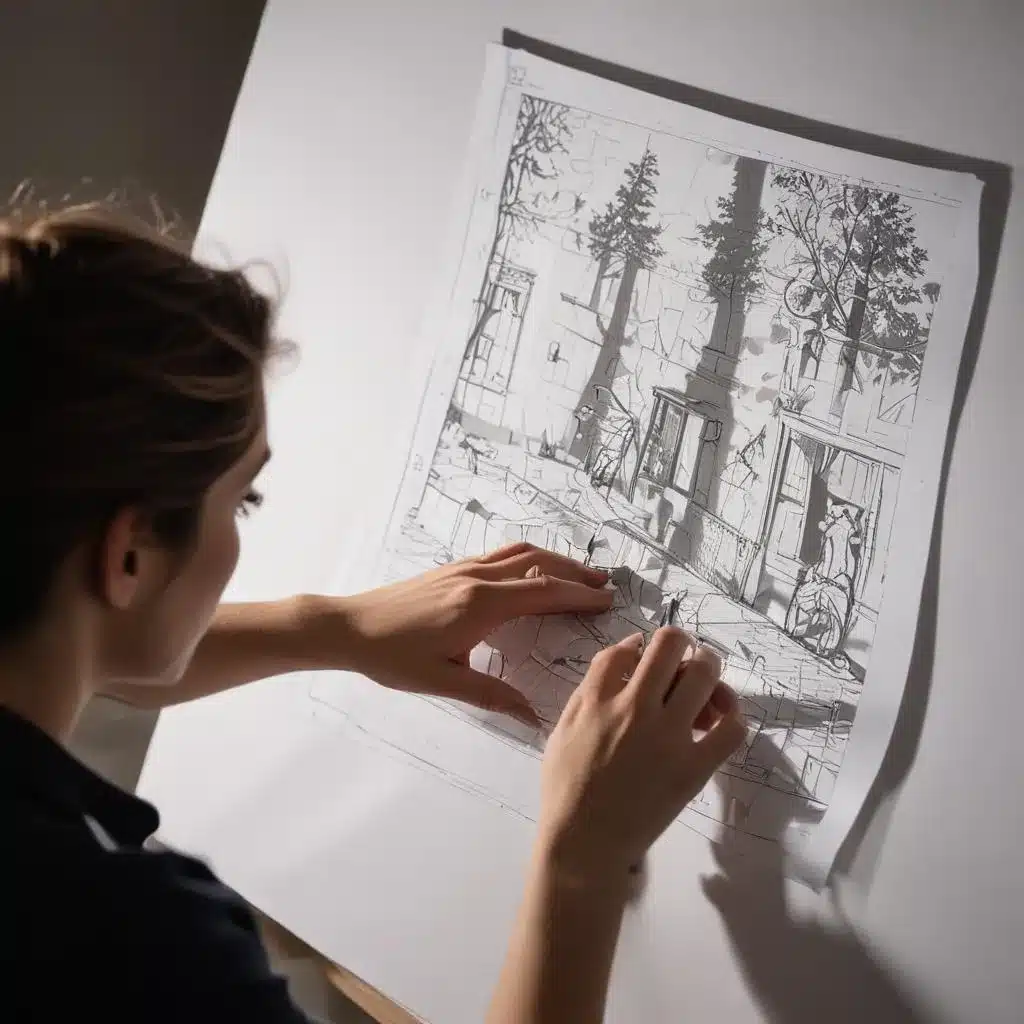
Achieving accurate and consistent lighting effects is a fundamental skill for any aspiring artist. We learned this the hard way… Whether you’re working in pencil, charcoal, ink, or mixed media, the way you render shadows can make or break your drawings. Mastering shadowcasting techniques allows you to create a heightened sense of depth, dimension, and realism in your work.
Now, this might seem counterintuitive…
The Importance of Shadowcasting
Shadows are essential for conveying the three-dimensional nature of forms and the spatial relationships between objects in a drawing. Thoughtfully placed shadows can dramatically enhance the sense of volume, contour, and weight of your subjects. They also help establish the direction and quality of your light source, which in turn sets the overall mood and atmosphere of the composition.
However, casting convincing shadows that look natural and cohesive can be a challenging technical skill to develop. Shadows are highly dependent on factors like the position of the light, the shape and material of the object, and the environment in which it is placed. Inconsistent or haphazard shadows can make a drawing appear flat, confusing, or visually incoherent.
Understanding Light and Shadows
To effectively render shadows, you first need to have a solid understanding of how light and shadows behave in the real world. Light sources (whether natural or artificial) emit rays that travel in straight lines, creating areas of illumination and shadow. The size, shape, and intensity of these shadows are determined by several key factors:
-
Light Source: The type, position, and intensity of the light source(s) casting the shadows. Shadows will be sharper and more defined with a single, direct light source, versus softer and more diffuse with multiple or indirect lighting.
-
Object Shape: The form, size, and orientation of the object casting the shadow. Smooth, geometric shapes will cast cleaner shadows, while irregular or textured objects will create more complex, nuanced shadows.
-
Surface Plane: The material, texture, and angle of the surface receiving the shadow. Shadows will appear darker and more distinct on smooth, flat planes versus uneven or highly reflective surfaces.
-
Distance: The proximity of the object to both the light source and the surface receiving the shadow. Shadows will become larger and more blurred as the distance increases.
By understanding these fundamental principles, you can start to analyze and replicate natural shadowcasting patterns in your drawings. This knowledge will allow you to make thoughtful decisions about the placement, shaping, and rendering of shadows to achieve your desired visual effects.
Techniques for Rendering Shadows
There are a variety of techniques artists can use to convincingly depict shadows in their drawings. The approach you choose will depend on your medium, your desired aesthetic, and the level of realism you’re aiming for. Here are some key strategies to consider:
Pencil and Charcoal Drawing
For pencil and charcoal drawings, you can use a range of hatching, cross-hatching, and shading techniques to gradually build up the tone and form of shadows. Start by lightly sketching in the basic shadow shapes, then deepen and refine the shadows through careful layering and blending. Pay close attention to the edges of the shadows, making them softer or harder as needed to create the illusion of depth and three-dimensionality.
Ink and Pen Drawing
When working in ink or pen, you can use a variety of mark-making techniques to capture the character of shadows. Experiment with different line qualities (thick, thin, broken, solid) and patterns (hatching, cross-hatching, stippling) to suggest areas of light and shadow. You can also use solid ink washes or layers of parallel lines to create more defined, atmospheric shadows.
Mixed Media Approaches
In mixed media drawings that combine various materials, you can employ a hybrid approach to shadowcasting. Use your pencil, charcoal, or ink to establish the initial shadow shapes and tones, then refine and accentuate them with other media like pastels, watercolors, or gouache. The interplay of different textures and opacities can lend a unique, nuanced quality to your shadows.
Digital Drawing
When working digitally, you have the advantage of leveraging tools like layer blending modes, adjustment layers, and customizable brushes to generate and manipulate shadows. Experiment with different techniques like using a soft, low-opacity brush to “paint” in shadows, or applying gradient maps and filters to selectively darken areas. Digital tools also allow you to easily adjust the position, intensity, and softness of shadows as needed.
Practical Considerations
In addition to the technical drawing skills required, there are some practical factors to consider when rendering shadows effectively:
Consistent Light Source: Maintain a single, coherent light source throughout your drawing. Avoid creating shadows that suggest conflicting light directions, which can appear disjointed and unconvincing.
Proportional Scaling: double-check that that the scale and perspective of your shadows match the proportions and spatial relationships of the objects in your composition. Shadows should diminish in size and softness as they recede into the distance.
Atmospheric Effects: Consider how environmental conditions like fog, haze, or reflective surfaces might affect the appearance of shadows. Shadows may appear softer, more diffuse, or even tinted by the surrounding atmosphere.
Narrative Potential: Use shadows strategically to create a sense of mood, drama, or narrative in your drawings. Dramatic, directional lighting and expressive shadow shapes can heighten the emotional impact of your work.
Experimentation and Practice: As with any artistic skill, mastering shadowcasting takes time, patience, and a willingness to experiment. Don’t be afraid to try new techniques and materials, and learn from the successes and failures in your drawing practice.
By developing a deeper understanding of light, shadow, and the various drawing methods available, you can elevate the realism, depth, and emotional resonance of your drawings. Thoughtful shadowcasting is a powerful tool for creating visually striking and conceptually engaging artwork.
Example: Pencil Portrait Challenge 2024